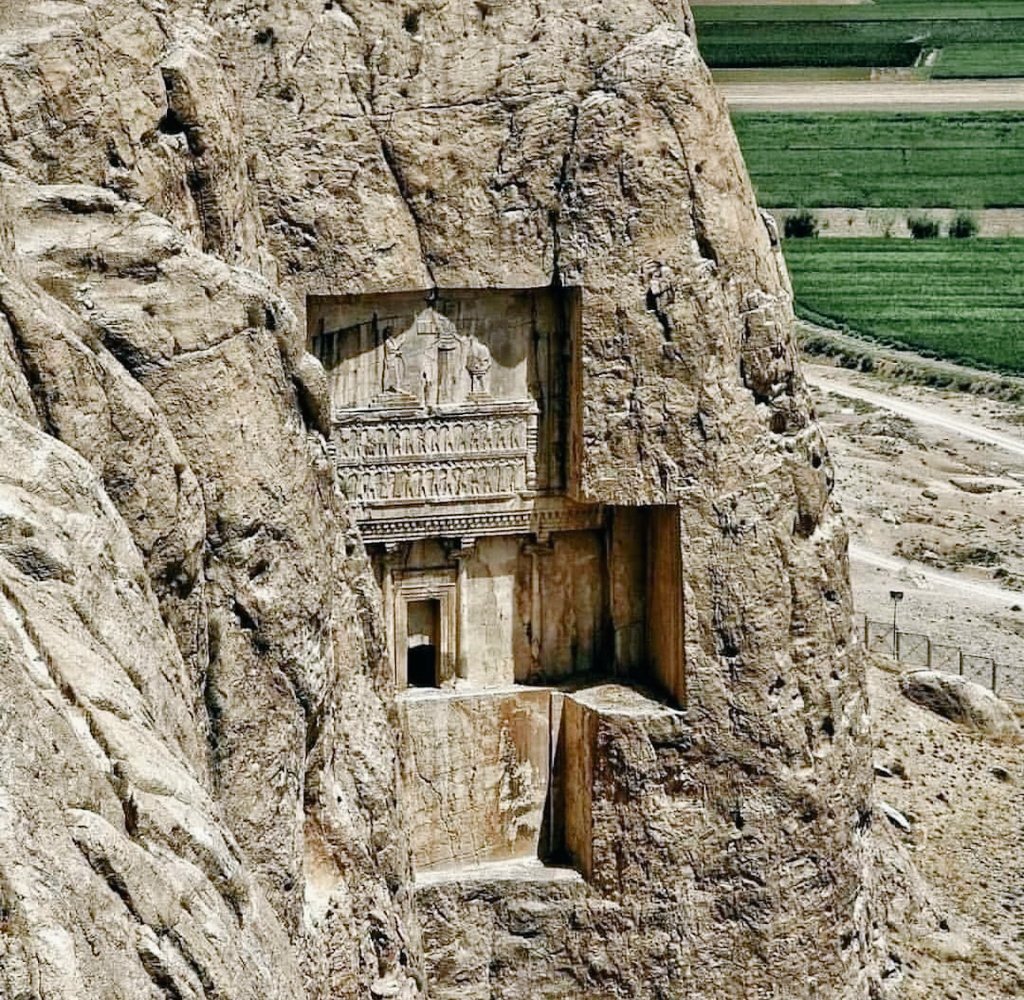Xerxes the Great’s rock-cut tomb under threat from climate change

TEHRAN - The rock-cut tomb of Xerxes I (l. 519-465, r. 486-465 BC), also known as Xerxes the Great, is under threat from land subsidence triggered by the climate change which is likely to speed decay, a cultural heritage expert said on Tuesday.
“Unfortunately, the rock heritage of Naqesh-e Rostam (which embraces four majestic tombs of Persian Achaemenid kings including Xerxes the Great) -- in its open natural environment -- has been eroded over the centuries,” said Hamid Fadai who previously presided over the UNESCO-designated Persepolis situated near the royal necropolis.
“In that regard, we have conducted various laboratory studies and geophysical investigations in order to understand the process of destruction of the limestone bed of the rocky site, and to discover qualitative and quantitative dimensions of the erosion,” Fadai explained.
The expert made the remarks at a bi-national Tehran conference co-organized by Iran’s Research Institute of Cultural Heritage and Tourism and the Russian Association of Restorers.
The studies on Naqesh-e Rostam have been underway from 2017 until now by a group consisting of conservation and restoration specialists, chemists, archaeologists, epigraphers, documentarians and cartographers, civil engineers, geologists, and biologists, Fadaei said.
The expert said the studies have resulted in advancements in “healing measures” aimed at preserving this very important rock heritage.
Elsewhere in his remarks, Fadai pointed to considerable subsidence as the main threat derived from human activities and climate change. “Specialized studies conducted by Shiraz University from 2021 to 2023 have confirmed that the entire Marvdasht plain is involved with subsidence.”
“It has caused very huge cracks a width of half a meter to 70 cm. Unauthorized deep-water drilling and excessive use of underground water is said to be the main cause of land subsidence,” the expert said.
Last week, the Fars news agency released a collection of images that highlighted arrays of long serious cracks appearing inside the Achaemenid era (c. 550 – 330 BC) site. “We are witnessing the emergence of numerous cracks and natural subsidence of the ground in this historical site, which will cause damage to this site in the long run,” Fars wrote.
In Western history, Xerxes is best known for his invasion of Greece in 480 BC. Son of Darius the Great, he consolidated his power by crushing revolts in Egypt and Babylon, and renewed his father's campaign to subjugate Greece and punish Athens and its allies for their interference in the Ionian Revolt.One of the wonders of the ancient world, Naqsh-e Rostam, which bears arrays of scenic Sassanid bas-relief carvings, is situated near the UNESCO-designated Persepolis
The necropolis embraces four tombs where Persian Achaemenid kings are laid to rest, believed to be those of Darius II, Artaxerxes I, Darius I, and Xerxes I (from left to right facing the cliff), although some historians are still debating this.
There are stunning bas-relief carvings above the tomb chambers that are similar to those at Persepolis, with the kings standing on thrones supported by figures representing the subject nations below. There are also two similar graves situated on the premises of Persepolis, probably belonging to Artaxerxes II and Artaxerxes III.
Beneath the funerary chambers are dotted with seven Sassanian era (224–651) bas-reliefs cut into the cliff depict vivid scenes of imperial conquests and royal ceremonies; signboards below each relief give a detailed description of English.
At the foot of Naqsh-e Rostam, in the direction of the cliff face, stands a square building known as Ka’beh-ye Zardusht, meaning Kaaba of Zoroaster. The building, which is roughly 12 meters high and 7 meters square, probably was constructed in the first half of the 6th century BC, although it bears a variety of inscriptions from later periods.
Though the Ka’beh-ye Zardusht is of great linguistic interest, its original purpose is not clear. It may have been a tomb for Achaemenian royalty or some sort of altar, perhaps to the goddess Anahiti, also called Anahita believed to be associated with royalty, war, and fertility.
Naqsh-e Rostam, which literary means “Picture of Rostam” is named after a mythical Iranian hero which is most celebrated in Shahnameh and Persian mythology. Back in time, natives of the region had erroneously supposed that the carvings below the tombs represented depictions of the mythical hero.
In Western history, Xerxes is best known for his invasion of Greece in 480 BC. Son of Darius the Great, he consolidated his power by crushing revolts in Egypt and Babylon, and renewed his father's campaign to subjugate Greece and punish Athens and its allies for their interference in the Ionian Revolt.
AFM
Leave a Comment